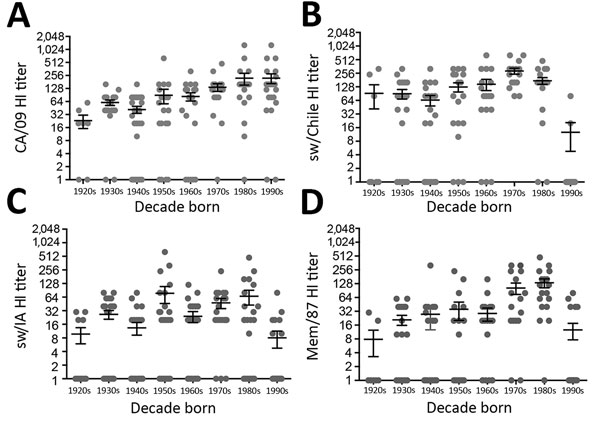Volume 23, Number 2—February 2017
Research
Swine Influenza Virus (H1N2) Characterization and Transmission in Ferrets, Chile
Figure 7

Figure 7. Evaluation of serologic responses of humans to H1 viruses by age. Hemagglutination inhibition (HI) studies were performed for CA/09 (A), sw/Chile (B), sw/IA (C), and Mem/87 (D) viruses by using human serum samples (n = 137) collected as part of an ongoing prospective observational study carried out at the University of North Carolina Family Medicine Center (Chapel Hill, NC, USA) in 2009–2015. A subset of the available samples were chosen from persons whose serum samples were collected 28–32 days after seasonal influenza vaccination. Samples were grouped by decade of birth (1920–1929, 1930–1939, 1940–1949, 1950–1959, 1960–1969, 1970–1979, 1980–1989, and 1990–1999). Groups consisted of samples from 7–22 persons and were balanced for sex and age whenever possible. Gray dots represent inverse HI titers of individual persons and bars represent mean HI titer ± SEM per decade born.
1These first authors contributed equally to this article.
2These senior authors contributed equally to this article.